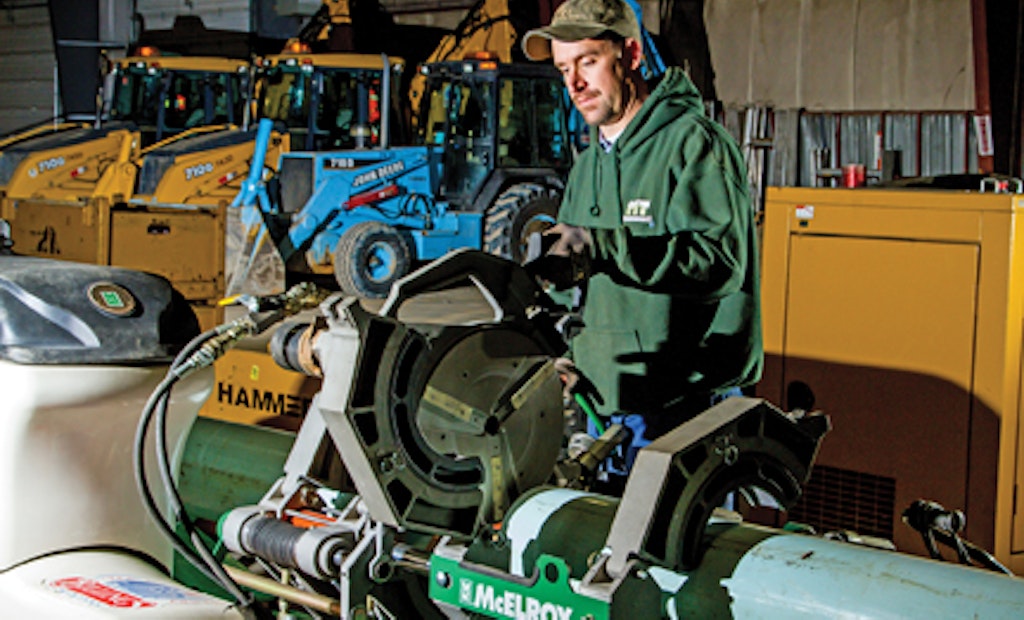Interested in Rehab/Relining?
Get Rehab/Relining articles, news and videos right in your inbox! Sign up now.
Rehab/Relining + Get AlertsRather than subcontracting pipe bursting work this season, perhaps it’s time to invest in the necessary equipment and train your municipal workers to do the specialty jobs. Take a few notes from Scott Emerick, superintendent of distribution and collections in Billings, Mont., who knows a few tricks for preparing for pipe bursting season.
“We’ll probably pipe burst about 7,000 to 8,000 feet of sewers and 7,000 to 8,000 feet of water line this season,” Emerick says. He says the pipe bursting season in his part of the country runs from May 1 to November. In addition to the in-house work done by Billings’ crews, the city will hire out some of the pipe replacement project, using open-cut. That’s true where depths are more than 12 to 13 feet beyond the practical capability of city equipment.
Billings, population 105,000, has 460 miles of sewer pipe and 460 miles of water main. Emerick’s collections and distributions staff numbers 30.
To get ready, Emerick and his crew do a ton of planning, making sure they’re focused on the right projects when the pipe bursting season does arrive.
“We do a lot of prep work,” Emerick says. Using the utility’s asset management and GIS systems, Emerick and his team review the water and sewer system, identifying the areas where they need to focus their attention.
“On the sewer side, we scan for SSOs and tree root issues,” Emerick says. “We review streets and alley rights of way, and street features like curbs and gutters. Using GPS we establish a baseline for all utilities. We keep narrowing the process down to specific pipe bursting projects.”
With water mains, pipes are at a depth of 6 1/2 feet, and the Billings team looks primarily for areas with water leaks and main breaks.
Another important step in the off-season involves approvals. Once Emerick and his staff have identified the key pipe bursting projects, their plan is sent to the state water agency for approval. “This usually takes about a month, depending on the workload at the state level and the time of year,” Emerick says.
Then, the equipment must be tuned up and maintenance checks completed, so everything is ready to roll once the season starts. “We want to be confident everything will work when we start it up,” Emerick says.

Billings, which started pipe bursting on its own in 2005, breaking clay pipe and pulling HDPE, owns a McElroy 412 fusion machine, which it uses to fuse sections of PVC pipe for water lines, HDPE for sewers.
Emerick says his crew has become knowledgeable and confident with HDPE and PVC, having used different pipe materials in the past — some successfully, others not. “A failure leaves a bad taste in the mouth,” he says. “It sort of defeats the idea of trenchless.”
“We’d like to add a 618 fusing machine in the future,” Emerick continues. “The 412 is limited to 12-inch diameter and even that’s a bit of a stretch. Our crews are really comfortable with 8-inch pipe, replacing 8-inch with 8-inch, or 6-inch with 8-inch, or 4-inch with 8-inch. The 618 would enable us to do larger diameters.”
The use of outside contractors for pipe replacement gives Emerick a chance to compare costs. “We figure the cost to do it ourselves is about $65 a foot for sewers, and $105 for water mains,” he says. That compares with $200 to $300 a foot for outside contractors —an all in cost for initial engineering through contract completion.
Emerick says the city’s number doesn’t include street restoration costs, which are handled by the street department, but he still likes the comparison. “We like the investment (in fusing and pipe bursting),” he says. “We’ve saved quite a bit. I’m surprised more municipalities aren’t doing more of their pipe bursting themselves.”
To see what other solutions Billings uses to streamline its water distribution and sewer maintenance program, visit www.mswmag.com/editorial/2014/03/first_to_burst.






